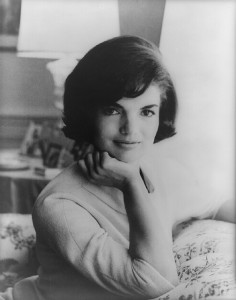- Calls to this hotline are currently being directed to Within Health or Eating Disorder Solutions
- Representatives are standing by 24/7 to help answer your questions
- All calls are confidential and HIPAA compliant
- There is no obligation or cost to call
- Eating Disorder Hope does not receive any commissions or fees dependent upon which provider you select
- Additional treatment providers are located on our directory or samhsa.gov
Modeling and Anorexia: Where Have We Been? Where Are We Now?
Contributor: Article Contributed by Crystal Karges, MS, RDN, IBCLC for Eating Disorder Hope

With the addition of mass media and photo-shop techniques, our society is saturated with these types of images that often skew our idea of body image. The pressure to look good in the summertime as well as many other factors. How has the images portrayed through modeling changed in the last few decades, and where are we today?
The Early Models
Beginning in the early 1900s, the female model depicted the standard of femininity at the time, which included a balance of fashion and athleticism. During a time when corsets were commonly used to emphasize the waist, models during this time period revealed an emphasis on voluptuousness, seen in the image of the “Gibson Girl”.
This followed through post World War 1, until the evolution of the “flapper girl”. The image of the “flapper girl” came to define the 1920s, which was almost a resistance against the Prohibition movement of this decade. Flappers modeled a much more relaxed body image with minimal emphasis on curves and push against corset use.
The “Flapper Girl” and Hollywood Glamour

This carried through into the post-war era, when Hollywood glamour began playing an influential role in the standard of beauty among women in this generation.
The 1950s saw the rise of the “hourglass look”, and full-figured women were idolized. Popular glamour models included Marilyn Monroe and Grace Kelly, to name a couple, and flawless beauty was trended among and through the rise of the film industry.
The Rise of “The Twig”
Through the 1960s and 1970s, the “thin and twiggy” like appearance began to gain popularity through the mainstream media, coinciding with the sexual revolution of these decades and the rise of the “hippie”. Models, actresses, singers, and the like, often felt the pressure to be thing and touted an appearance that promoted this ideal, with advertisements beginning to promise quick and rapid weight loss through crash dieting to achieve these ideals.
The early 1980s would see the death of singer Karen Carpenter, who died from complications related to anorexia nervosa, who received mainstream coverage during the 1970s and was also known for her thin-like appearance.
Progressively Skinnier Models

While the fashion emphasis changed throughout these decades, thinness was continually idealized with models demonstrating a body image that is drastically unrealistic in comparison to the average women.
How the Evolution Happened
When we analyze where we have come today, it is easy to see how the body image of the “ideal” American women has changed from voluptuous to thin, with value and emphasis on differing standards.
Perhaps at this point in our history, more women are resistant and rebellious against the mainstream standards of what is “ideal body image”, but there remains a discrepancy between what is seen in the fashion industry and media and the average American women.
The Role of Photoshop
The use of photoshop and other such tools that has manipulated images has also given us an unrealistic portrayal of what is “beauty”. In our country today, we seen higher rates of negative body image and increasing dissatisfaction with our bodies in general.
While a greater awareness continues to promote more realistic body image standards, it is important to recognize where we have come from as a society and understand where we want to be. There is a movement to give a makeover to the fashion industry and it has to start somewhere.
What messages do we want to promote to coming generations about body image and beauty? The answers to these questions should shape the course of actions that are taken to promote a healthier standard of beauty today.
Community Discussion – Share your thoughts here!
How do you think modeling has influenced female body image today? Do you think the influence is positive or negative?
Last Updated & Reviewed By: Jacquelyn Ekern, MS, LPC on February 21st, 2015
Published on EatingDisorderHope.com
